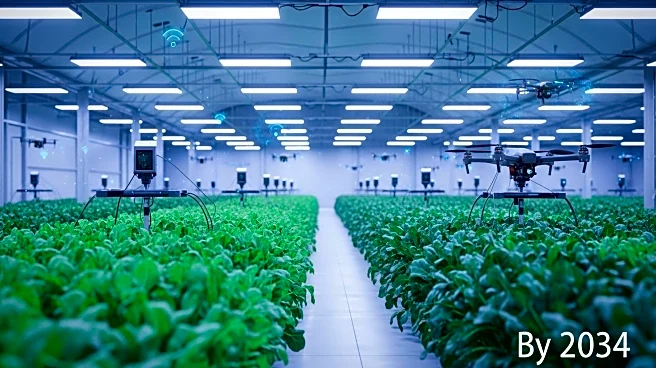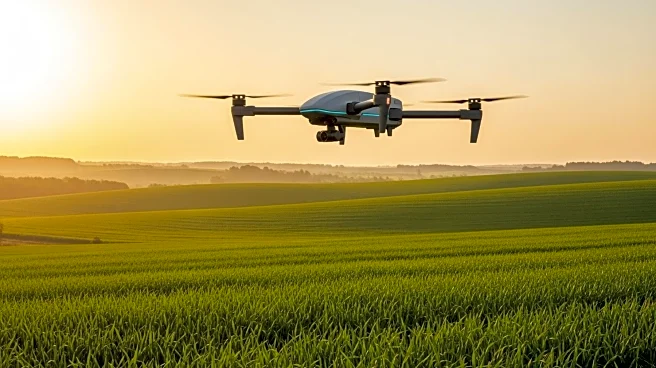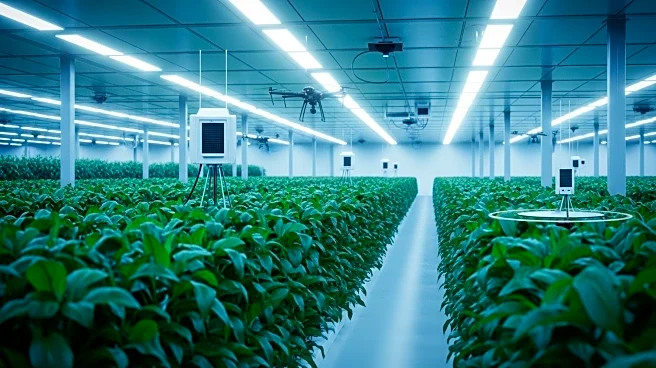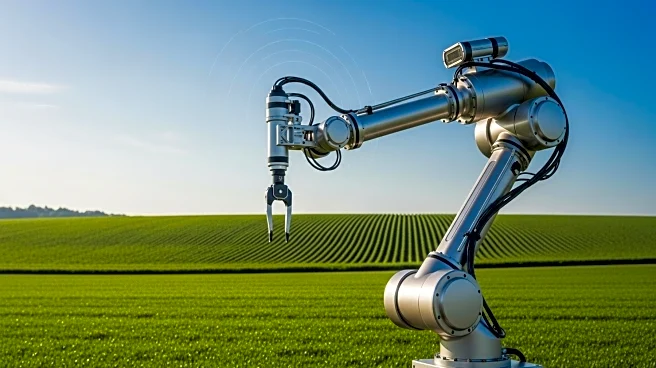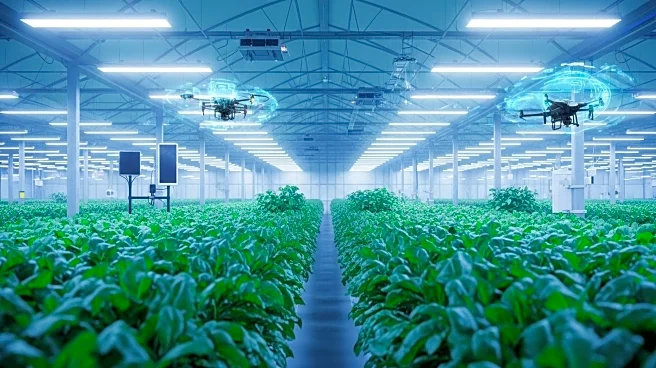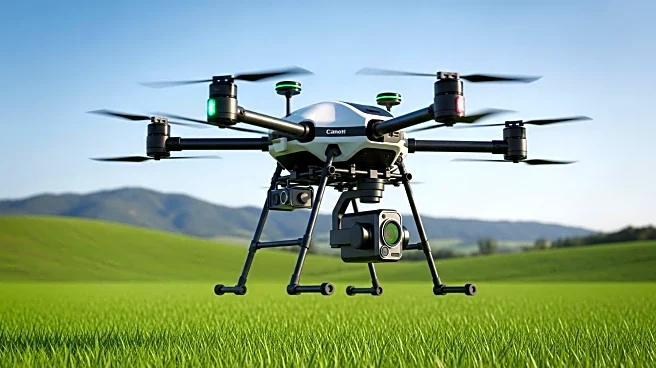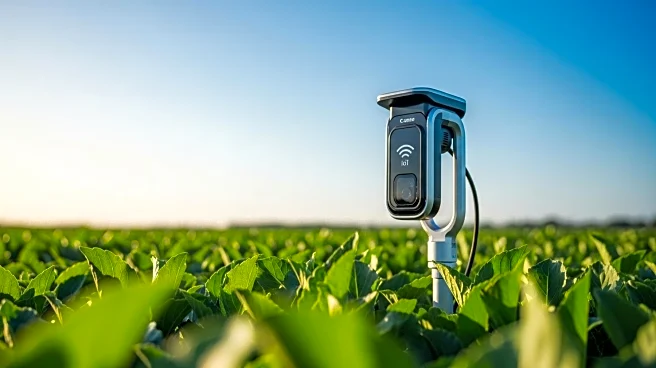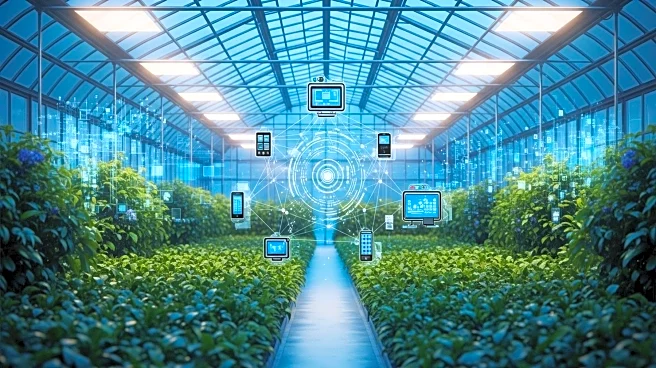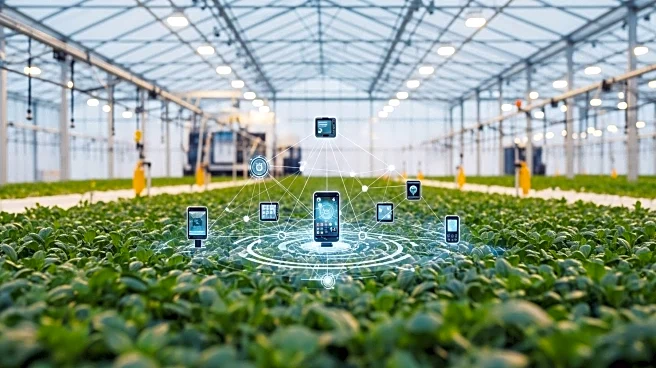What's Happening?
The Agriculture Drones and Robots market is experiencing significant growth, driven by technological advancements and the increasing demand for precision farming solutions. The market size is estimated to be valued at USD 6.2 billion in 2025 and is expected to reach USD 18.3 billion by 2032, exhibiting a compound annual growth rate (CAGR) of 16.7%. The integration of artificial intelligence, machine learning, and data analytics is making agriculture drones and robots essential tools for enhancing yield, reducing costs, and improving overall farm management. Farms utilizing drone technology have reported yield increases of up to 15% due to more efficient resource management. The growing trend of autonomous farming solutions, such as autonomous tractors and drones, is projected to enhance labor efficiency by up to 30%, driving demand for these technologies.
Why It's Important?
The growth of the Agriculture Drones and Robots market is crucial for addressing the increasing need for food security due to the rising global population, which is expected to reach 9.7 billion by 2050. Enhanced agricultural productivity is necessary to meet this demand, and advanced technologies are playing a pivotal role. Government initiatives supporting smart farming technologies are providing a significant boost to market growth, with investments in precision agriculture projected to exceed USD 1 billion in the next five years. The reduction in operational costs through automation is encouraging farmers to invest in drone and robotic technologies, leading to a more efficient agricultural process. This shift towards technology-driven farming is expected to have a profound impact on the agricultural sector, particularly in precision farming.
What's Next?
Recent trends indicate a shift towards the integration of AI and machine learning in agriculture drones and robots, allowing for more sophisticated data analysis and enhanced decision-making capabilities. AI-powered drones can now predict crop health and yield with a high degree of accuracy, helping farmers optimize their resources. The rise of vertical farming and urban agriculture is creating new opportunities for these technologies, offering solutions for monitoring and managing crops in constrained environments. The precision agriculture segment presents a significant opportunity, with advancements in drone technology enabling farmers to monitor crop health and optimize resource use more effectively. The Asia Pacific region is emerging as a high-potential market, fueled by rapid urbanization and a growing focus on improving agricultural productivity to meet food demands.
Beyond the Headlines
The integration of AI and machine learning in agriculture drones and robots is not only enhancing efficiency but also transforming the competitive landscape. Companies like DJI and PrecisionHawk are adopting various competitive strategies to maintain their position, such as launching advanced drone models tailored for agricultural applications and enhancing software capabilities through partnerships with agricultural data analytics firms. This technological evolution is reshaping the market, posing challenges for companies to keep pace with rapid advancements. The competitive landscape is characterized by the need for continuous innovation, and companies are adopting strategies like partnerships, investments in R&D, and customer education programs to drive adoption of new technologies.

